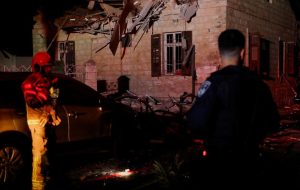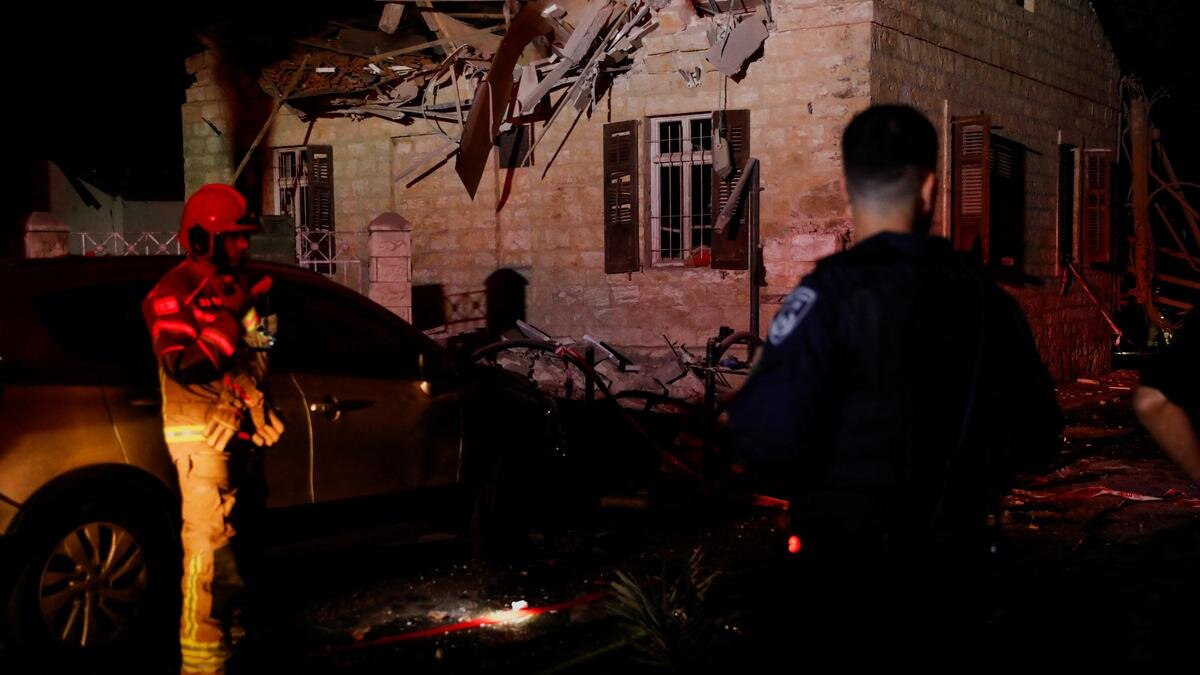Hezbollah sends Haifa into the dark
TEHRAN – Hezbollah has responded to the Israeli regime’s heavy bombardment of the Lebanese capital Beirut’s southern suburb. The suburb, also known as Dahiyeh, as well as other regions south of Beirut, faced 145 Israeli attacks over 24 hours on Saturday, according to Lebanese authorities. On Sunday, Israeli warplanes continued to bomb the Lebanese capital.


TEHRAN – Hezbollah has responded to the Israeli regime’s heavy bombardment of the Lebanese capital Beirut’s southern suburb.
The suburb, also known as Dahiyeh, as well as other regions south of Beirut, faced 145 Israeli attacks over 24 hours on Saturday, according to Lebanese authorities.
On Sunday, Israeli warplanes continued to bomb the Lebanese capital.
An airstrike targeted a residential building in Ras al-Nabaa, Beirut.
The area was believed to be out of the Israeli scope of aggression as it houses displaced people from Dahiyeh, south of Lebanon and the Bekaa region after the bombing campaign began in September.
Footage on Sunday showed damage sustained at the Our Lady of Salvation Church in Beirut as a result of Israeli airstrikes.
Hezbollah has retaliated to the latest Israeli aggression by bombarding Haifa with missiles and rockets overnight on Saturday and Sunday.
The Lebanese resistance announced that it attacked a group of military bases in Haifa and the Carmel region.
These included:
1- Haifa Technical Base (affiliated with the Israeli Air Force, housing a training college for preparing Air Force technicians), located 35 kilometers east of Haifa.
2- Haifa Naval Base (affiliated with the Israeli Navy, housing a fleet of missile boats and submarines), located 35 kilometers north of Haifa.
3- Stella Maris Base (a strategic base for maritime surveillance and control along the northern coastline), located 35 kilometers northwest of Haifa.
4- Tirat Carmel Base (housing the regiment and battalion of the northern region’s transport and a logistical naval base), located 40 kilometers south of Haifa.
5- For the first time, Nesher Base (a gas station affiliated with the “Israeli” military), located 40 kilometers southeast of Haifa.
Footage shows widespread devastation in the industrial Israeli hub. The Israeli military reported a number of casualties.
The Hezbollah attacks also led to a power outage in the city. Verified videos circulating on social media show several areas of Haifa in the dark without electricity.
Israeli media reported a massive missile strike launched from southern Lebanon towards Haifa and its surroundings making direct impact with air raid sirens blaring non-stop.
On Sunday, Hezbollah waged more operations “in support of the steadfast Palestinian people in the Gaza Strip, backing their valiant and honorable resistance, and in defense of Lebanon and its people.”
These included: “Operations targeting Israeli attempts to advance along the Lebanese-Palestinian borders, intercepting enemy drones and warplanes, and striking Israeli military sites, bases, deployments, and settlements in northern and deep occupied Palestine.”
Hezbollah struck the Israeli enemy gatherings with rockets on the outskirts of Khiam as the occupation forces (IOF) failed once again in their attempts to advance.
Footage purportedly showed smoke rising from vehicles belonging to the Israeli occupation forces igniting on fire during clashes in Wati al-Khiam, east of the town of Khiam in southern Lebanon.
Hezbollah announced an Israeli army gathering was attacked on the southern outskirts of Khiam town with a rocket barrage.
There Israeli Merkava tanks were spotted, being forced to withdraw from the outskirts of Khiam at high speed.
The IOF reportedly reached its deepest point in Lebanon since the attempted ground invasion in late September before pulling back after fierce battles with Hezbollah fighters.
Troops temporarily took control of a strategic hill in the southern Lebanese village of Chamaa, five kilometers from the border, the state-run National News Agency said.
The agency noted the IOF was later pushed back from the position.
Israeli forces blew up the Shrine of Shimon the Prophet in Chamaa, as well as several homes before they withdrew, the news report said.
Hezbollah announced its fighters targeted an Israeli Merkava tank on the eastern outskirts of Chamaa with a guided missile, causing it to burn and resulting in casualties among its crew.
Hebrew media reported casualties on Sunday among Israeli troops in southern Lebanon.
According to military expert Elijah Magnier, “Israel’s invading forces will break through the first line of attack and are expected to reach the first line of defense. This is normal for a powerful army, as it is normal for the resistance to harass, exhaust, and engage the enemy’s advance and to meet these forces in their static positions.”
The Israeli army said one of its troops fighting as part of the 13th battalion was killed in southern Lebanon.
Meanwhile, the resistance targeted the “Krayot area north of the occupied city of Haifa with a rocket barrage” on Sunday.
Hezbollah also attacked the Ma’aleh Golani Barracks (the headquarters of the Hermon Brigade 810) with a rocket barrage.
Despite the heavy Israeli bombardment of the Lebanese border region in the south, Hezbollah is launching more long-range missiles from above and underground.
